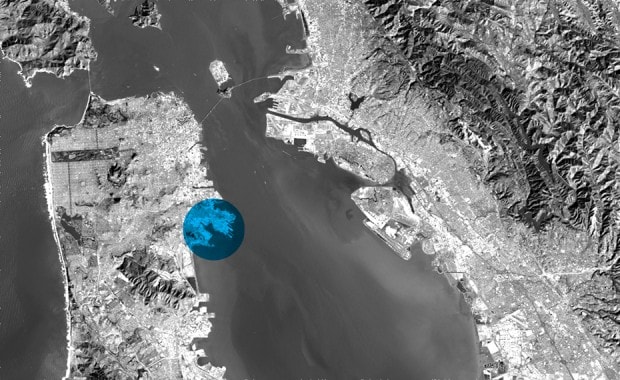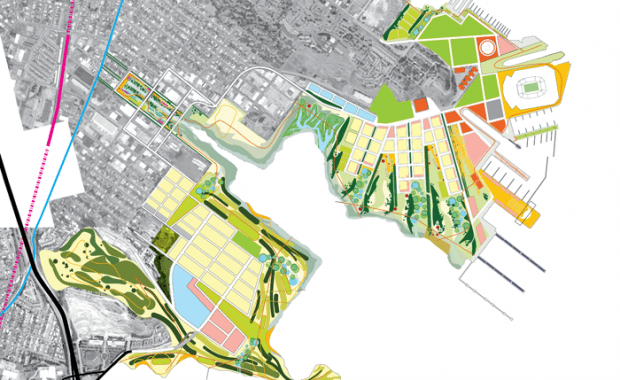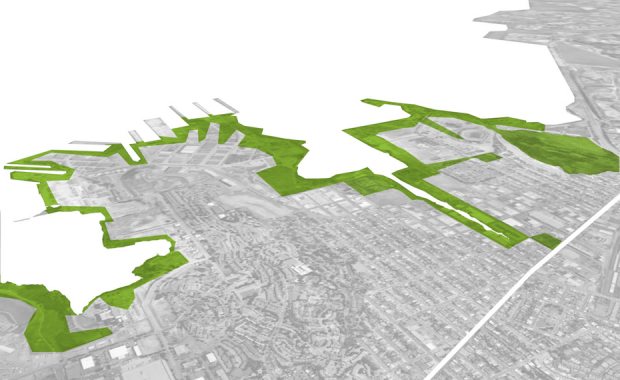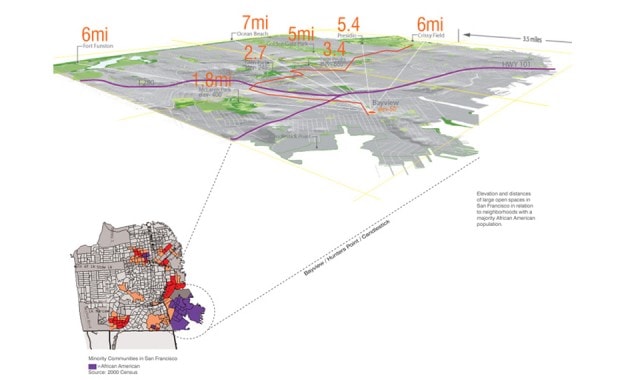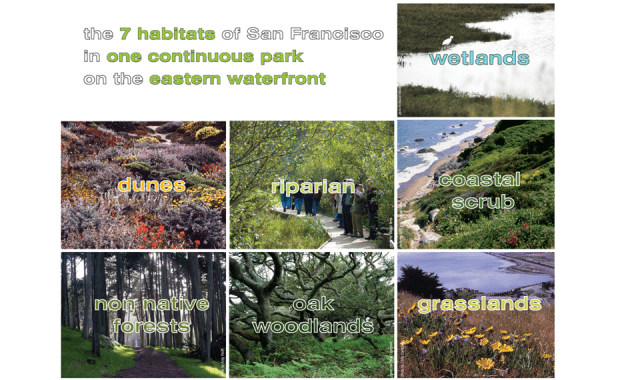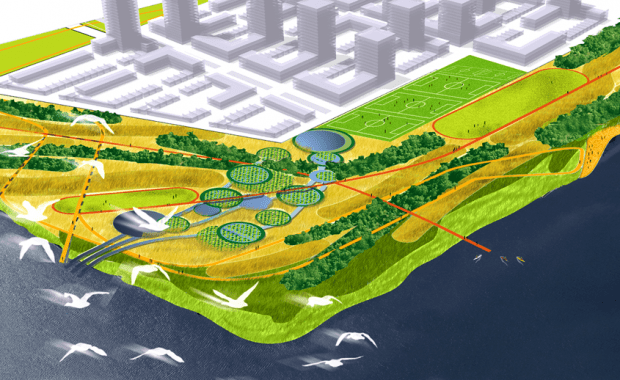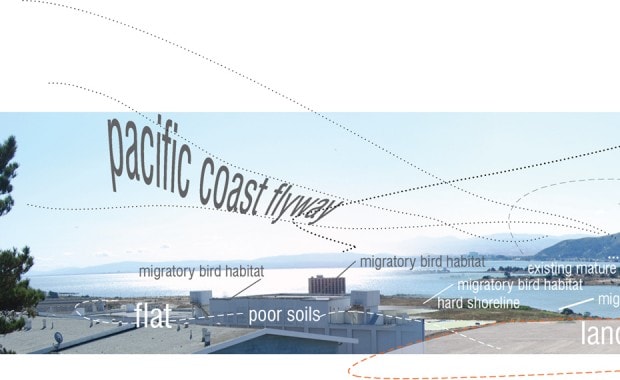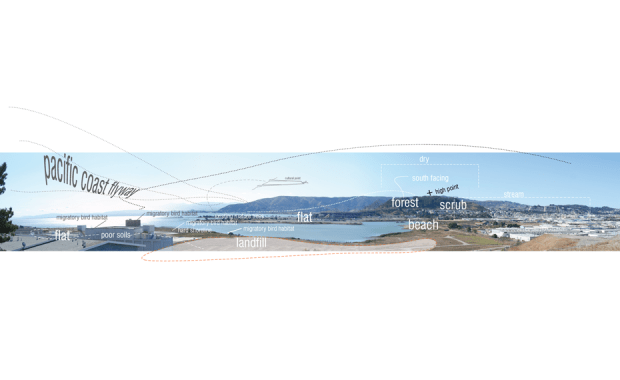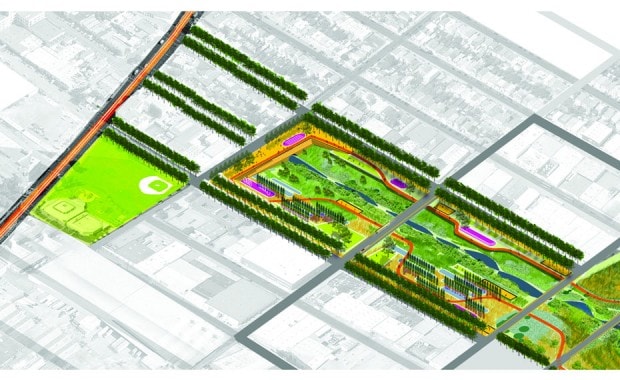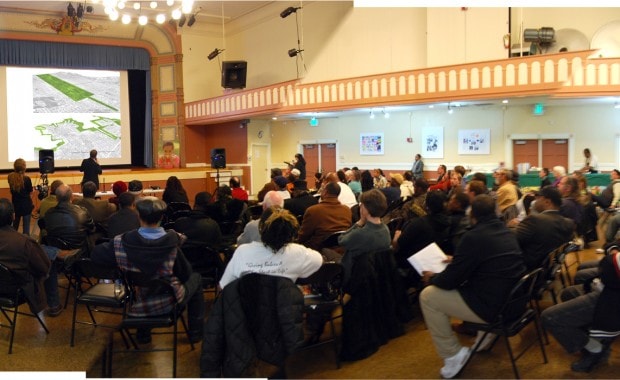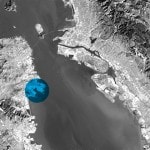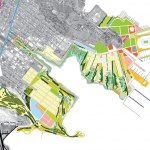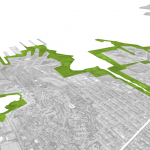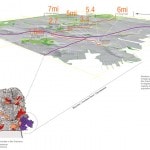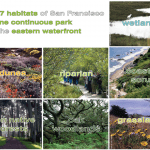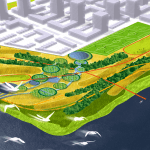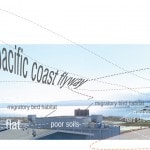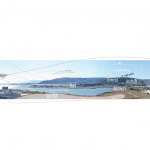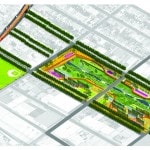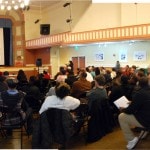Project: Hunters Point / Candlestick Point
“Ecological equity and the last great expansion of San Francisco”
Location: San Francisco, CA
Firm: Bionic
Year: 2009
Firm website: www.bioniclandscape.com
Project Description: The City of San Francisco and a developer have proposed a 700-acre development for Candlestick Point / Hunters Point Shipyard at the southwest edge of San Francisco. It will be the last large expansion of the city. The proposal includes commercial, retail, and residential space for 20,000 people, and a new stadium for the San Francisco 49ers. In response to the plan, a coalition of environmental organizations commissioned Bionic to create an urban design alternative that better address the needs of the existing community, including environmental health, economic development, and the creation of open space and its ecology. Through a community design process and analysis of the issues on a city-wide scale, the project documented an actual and perceived exclusion from the large landscapes and open spaces that the rest of the city residents benefit from.
By leveraging existing ecological assets and projecting a reconfiguration of property lines, the alternative planning approach calls for an urban design that is fundamentally different from the City/developer proposal. It proposes flora/fauna/pedestrian connections to open spaces outside the project boundary, and the re-connection of existing patches of habitat. The resulting composition of large-scale spaces provides an alternative that creates more development areas, continuous habitat corridors and large open spaces, and connects existing neighborhoods to the water.
The open space becomes one continuous park representing the six ecological communities of San Francisco. The habitat corridors expand the potential for existing species to flourish while additional habitat is created to reintroduce native species. Anticipating the future importance of water infrastructure for the immediate area and the City, the approach defines areas for water resources. The open space is capable of hosting water storage, wastewater treatment, and large-scale storm water treatment as infrastructural elements. On-site water resources will mandate the integration of building systems with the open space infrastructure. A sub area of the plan proposes to add several city blocks to the project area for the daylighting and restoration of Yosemite Creek. The addition would connect the waterfront to Third Street, the main commercial and transit corridor for the Bayview neighborhood. Once the stream is daylighted, it presents ample opportunity for a variety of open space uses, such as stormwater treatment, urban agriculture, and active and passive recreation. Most importantly, it provides a connection from the existing community to new parks, open spaces, and the Bay.
Project Team Members:
Marcel Wilson-Principal, Kelly Schoonmaker- Associate
Client: Saul Bloom – Arc Ecology]
Sierra Club
Urban Strategies Council
LSA-Transportation
| previous project | next project |
